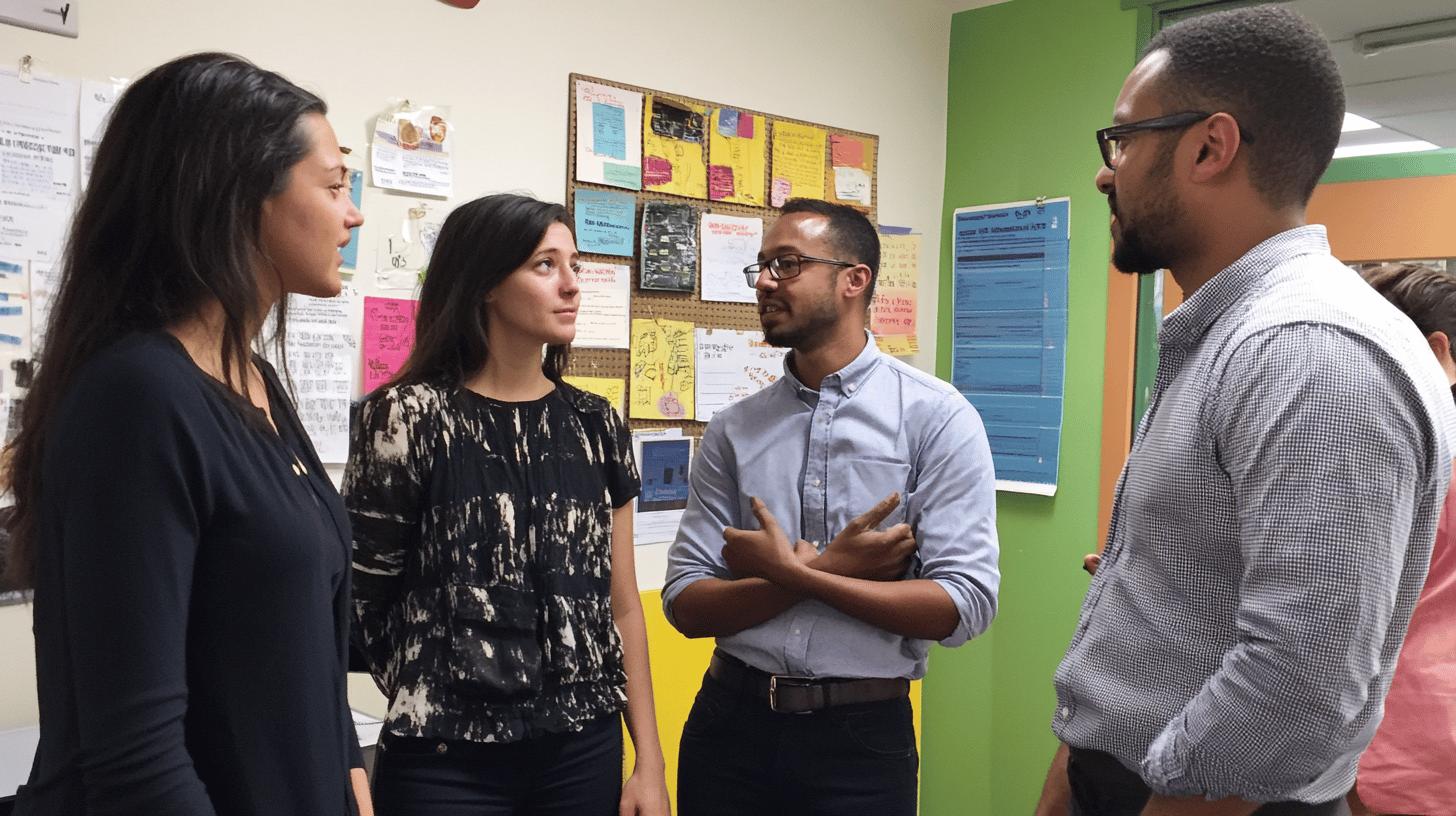In a world where the corporate landscape continuously evolves, companies are not only seen as profit-driven entities, but also as crucial players in community development.
The rise of companies giving back to the community highlights a profound shift towards corporate social responsibility. From launching online donation platforms and sponsoring employee volunteer programs to embarking on ambitious sustainability initiatives, these companies are redefining their roles in society. This change isn't just beneficial for communities, but it also enhances brand reputation and stakeholder engagement. This guide will delve into key methods of corporate giving and their tangible benefits. We'll also explore how tools like the Journey app empower companies and individuals in creating meaningful community connections. Discover how corporations are championing the cause of community support and inspiring a future where business success and social good go hand in hand.

Companies giving back to community have become a central part of modern business strategies. Increasingly, organizations integrate philanthropic efforts such as online donation platforms, employee volunteer programs, and sustainability initiatives directly into their operations. These endeavors foster meaningful connections between companies and the communities they serve, enriching both stakeholders and society.
Corporate social responsibility takes many forms. From supporting local nonprofits to implementing eco-friendly business practices, companies tailor their giving to align with their values and goals. Employee engagement in volunteer programs, matching donations, and community events are common methods that enhance morale and extend impact. Sustainability efforts, including energy efficiency and waste reduction, demonstrate a long-term commitment to social and environmental well-being.
The benefits of these initiatives are numerous. Companies experience enhanced brand reputation, stronger stakeholder loyalty, and increased employee satisfaction. Community members gain access to resources, support, and opportunities for growth. Platforms like Journey play a crucial role by providing a safe, trustworthy environment for authentic social interactions. Journey’s robust tools foster vibrant, engaged communities where individuals can participate in discussions, share resources, and support shared goals—making corporate giving efforts more effective and sustainable.
Common methods companies use to give back include:

Modern companies championing community support are shifting from traditional donation matching toward more creative corporate philanthropy examples. These innovative strategies include employee volunteer time matching, mentorship programs, and product-based giving that align closely with sustainable business practices. Small businesses supporting community initiatives often lead the way by embedding these approaches into their core values, fostering a sense of purpose and mutual benefit.
Employee-driven programs stand out as a crucial element in this evolution. Matching volunteer hours with financial support recognizes the value of employees’ time and efforts beyond monetary donations. Mentorship programs connect seasoned employees with community members or younger professionals, sharing knowledge and experiences that create long-lasting impact. Product-based giving, where companies donate goods or services, offers tangible benefits while highlighting the company’s unique strengths.
Customers also play an active role in modern CSR initiatives. Inviting customers to participate through cause-related marketing or co-created charity campaigns fosters a deeper connection between the brand and its audience. These initiatives encourage loyal customers to contribute to meaningful causes, expanding the company’s community impact organically. Such engagement strengthens brand credibility and builds a vibrant community around shared values.
The benefits of these innovative strategies are manifold. Companies witness increased employee satisfaction and retention, improved public perception, and stronger customer loyalty. These approaches foster a culture of continuous giving and engagement, helping businesses build authentic, long-term relationships within their communities.
Steps to Implement Innovative Corporate Social Responsibility Strategies:
Platforms like Journey provide a robust, safe, and trustworthy environment to implement these strategies effectively. Journey’s community creation and customization tools enable companies to build vibrant, focused spaces that encourage employee and customer participation. Its AI-powered moderation and engagement features ensure seamless communication and foster authentic social interactions. By leveraging Journey’s analytics and event management capabilities, businesses can continuously enrich their community efforts and witness tangible growth in their corporate philanthropy endeavors.

TriNet Group, Inc. stands out for its dedication to employee volunteering and sustainability. Recognized with a top rating on the Newsweek Excellence 1000 Index, TriNet encourages paid volunteer time off and integrates energy efficiency and waste reduction into its operations. This approach showcases how corporate giving can align with environmental responsibility and employee engagement.
Hasbro focuses its giving on children’s education and health. Through the Hasbro Children’s Fund, the company supports nonprofits targeting these areas. Employees actively participate in community service days, such as the Global Day of Joy, fostering a culture of involvement and care. Hasbro also commits to sustainable packaging, aiming to eliminate plastic by 2025, blending social good with environmental stewardship.
Intel Corporation exemplifies corporate responsibility with investments in STEM education and environmental initiatives. Its ambitious goal for net-positive water use by 2030 demonstrates a long-term vision for sustainability. Intel’s commitment includes supporting underrepresented communities and promoting renewable energy, reflecting a comprehensive approach to community impact.
Other notable examples include Google, which hosts an annual Global Giving Week encouraging employee donations matched by the company, generating millions for diverse causes. eBay’s ""Gifts That Give Back"" initiative innovatively integrates charitable giving into holiday shopping. Patagonia’s full Black Friday sales donation to environmental groups and Hanes’ nationwide sock drives to support homeless populations highlight unique and impactful giving methods.
These companies demonstrate myriad ways to champion community support:
The Journey app can serve as a crucial tool for community leaders inspired by these examples. It provides a safe, trustworthy environment to share stories, organize events, and foster ongoing discussions. With Journey’s rich customization and AI-powered moderation, community owners can effectively showcase contributions, engage members, and nurture a vibrant hub for sustained community impact. Journey’s features like event management, group chats, and member directories empower leaders to expand their reach and deepen connections among like-minded individuals committed to giving back.

Companies today integrate nonprofit partnerships as a crucial element of their broader business strategies. These partnerships often involve collaborations with local organizations and nonprofits, especially during critical times like the COVID-19 pandemic. Such alliances enable companies to blend their resources and expertise with community needs, creating a mutually beneficial impact that supports long-term social and environmental goals.
Strategic partnerships enhance community impact programs by combining diverse strengths to address pressing challenges. When companies align their values with those of nonprofit partners, they build credibility and strengthen brand reputation through giving. This integrated approach not only elevates the company’s public image but also fosters a culture of continuous community building efforts that resonate with employees, customers, and stakeholders alike.
The following table highlights four common partnership models, their key benefits, and example companies leveraging these strategies:

Employee volunteer programs have become a crucial backbone for companies dedicated to community support. These programs boost morale and foster a deep sense of belonging among employees, aligning personal values with corporate missions. Companies recognize that empowering employees to contribute their time and skills creates lasting community impact while enhancing workplace satisfaction.
Volunteer initiatives often include paid time off for volunteering, donation matching, and team-based service projects that reflect company values. These programs encourage employees to participate in diverse activities, from local cleanups to skill-based mentoring. By integrating volunteer efforts into everyday workflows, companies cultivate a vibrant culture of giving and mutual support that extends beyond the office walls.
The benefits of employee engagement are multifaceted. Companies witness increased retention, improved employee well-being, and strengthened community ties. Moreover, volunteer programs create opportunities for leadership development and cross-team collaboration, enriching the workplace ecosystem.
Best practices for launching effective employee volunteer initiatives include:
The Journey app supports these endeavors by providing a safe, trustworthy environment where employees can discover relevant volunteer opportunities and connect with like-minded colleagues.
Journey’s robust tools enable community owners to organize events, share updates, and foster rich discussions that deepen engagement. With customizable member profiles and group chats, Journey creates a vibrant hub for communication and collaboration. Its AI-powered moderation safeguards the community’s integrity, while event management features streamline organizing volunteer activities. By leveraging Journey, companies can effectively nurture employee-driven community efforts, witness continuous growth, and amplify their social impact.

The landscape of companies giving back to community is rapidly evolving, with strategic giving programs becoming more transparent and data-driven. Socially responsible companies increasingly blend technology with purpose-driven brands to create measurable impact. This shift fosters long-term community engagement by aligning corporate goals with social needs through innovative and accountable approaches.
Emerging technologies, including online donation platforms and mobile engagement apps, are reshaping how companies contribute to community initiatives. These tools enable granular tracking of contributions and provide real-time insights into the effectiveness of giving efforts. Transparency and accountability have become critical, as stakeholders demand clear evidence of social impact and ethical practices.
Looking ahead, companies must embrace these evolving trends to stay relevant and effective. The Journey app stands out as a vibrant hub supporting strategic community engagement. It offers robust tools that enable companies to build well-maintained communities, showcase contributions, and organize events seamlessly. Journey’s AI-powered insights help community owners monitor real-time impact and foster authentic social interactions, enhancing trust and retention among members.
Key upcoming trends in corporate giving include:
By leveraging platforms like Journey, socially responsible companies can effectively implement these trends, enriching their community-focused business strategies and fostering continuous growth and mutual support.
In conclusion, companies giving back to community have transformed from a simple act of charity into a vital business strategy. As these corporations engage in community initiatives, they not only boost their brand reputation but also strengthen stakeholder relationships. Innovative strategies, such as employee volunteer programs and nonprofit partnerships, provide measurable benefits, from enhanced employee satisfaction to increased customer loyalty. The future of corporate philanthropy involves transparency, data-driven decisions, and tech integration, paving the way for a deeper, more meaningful impact. Businesses looking to amplify their influence can leverage tools like the Journey app to foster authentic social interactions and uphold their commitment to community development and purpose-driven operations. Through these efforts, companies play a pivotal role in creating a more connected and supportive society.
Companies like Hasbro, Intel, Google, eBay, Patagonia, and Hanes actively contribute to their communities through programs focused on education, health, and environmental responsibility, enhancing their brand reputation.
When companies give back to the community, it is commonly referred to as Corporate Social Responsibility (CSR). This involves initiatives like philanthropy, employee volunteering, and sustainable business practices.
Yes, many companies accept donation requests through online platforms or direct proposals. Research companies that align with your cause and formalize your request, detailing how their support will make a difference.
An example of giving back is Intel’s investment in STEM education and sustainability efforts, including aims for net-positive water use, showcasing a commitment to both community growth and environmental health.